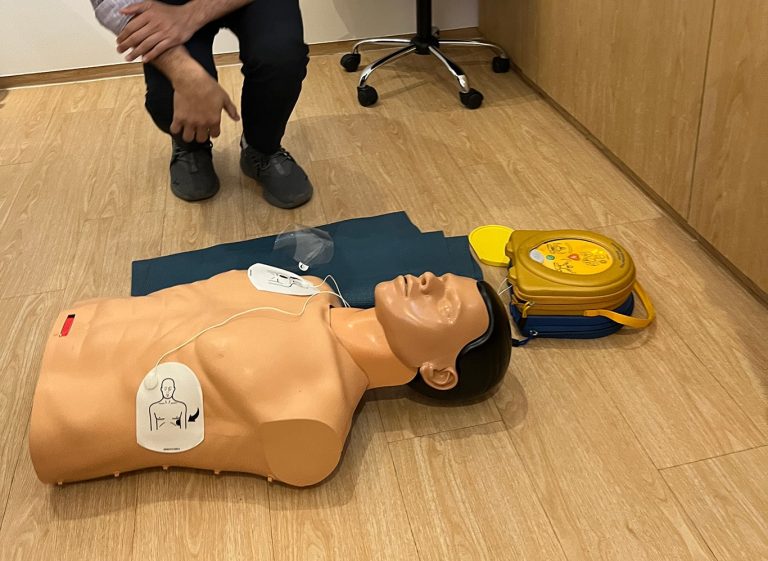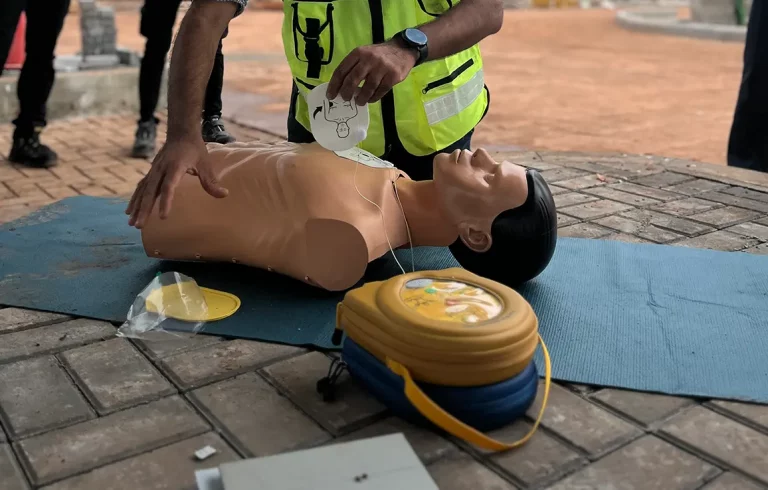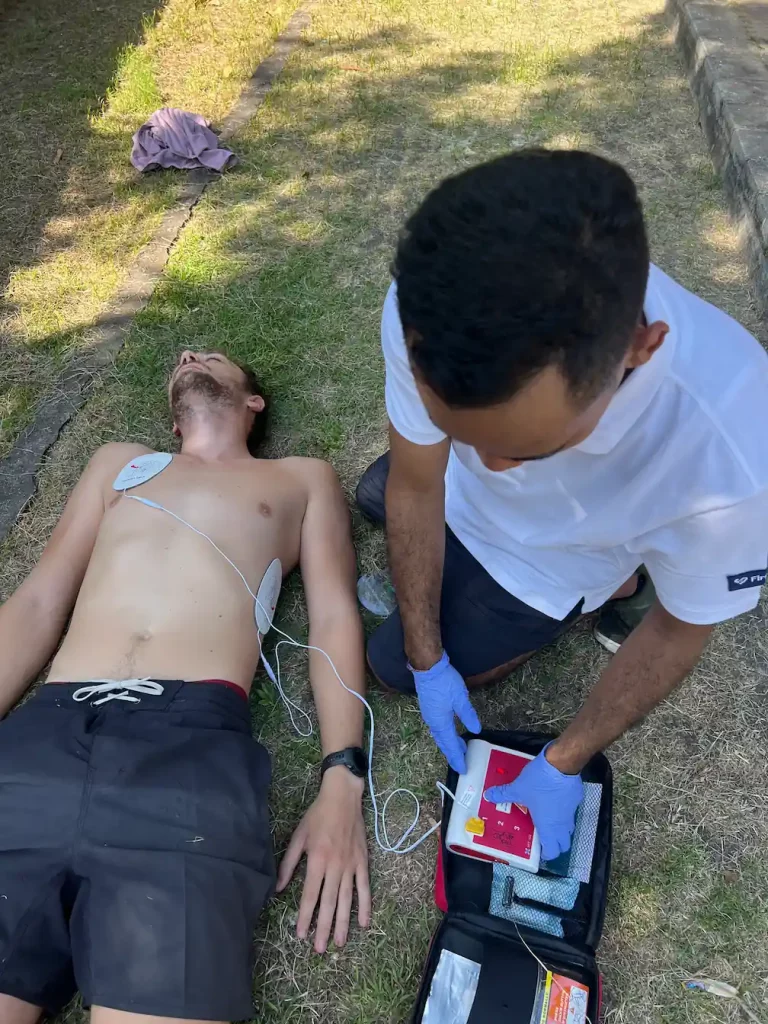Every second counts in a cardiac emergency. When someone’s heart suddenly stops beating, immediate action is crucial. That’s where Automated External Defibrillators (AED) come into play – portable devices designed to deliver an electric shock to restore normal heart rhythm. In this comprehensive guide, we’ll explore how AED work, their importance in saving lives, and step-by-step instructions on how to use them effectively.
Understanding AED :
An AED is a compact, user-friendly device equipped with adhesive electrode pads and voice instructions. It’s designed to be used by anyone, regardless of medical training. AED analyze the heart’s rhythm and deliver a shock if necessary to correct irregularities such as ventricular fibrillation or ventricular tachycardia.

Importance of AED in Saving Lives:
Quick access to an AED dramatically increases the chances of survival in cardiac arrest cases. Research shows that using an AED within the first few minutes of a sudden cardiac arrest can increase the survival rate by up to 70%. These devices are strategically placed in public areas, workplaces, schools, and transportation hubs to ensure prompt intervention in emergencies.

Step-by-Step Guide to Using an AED:
- Assess the Situation: Ensure the safety of the victim and bystanders. Call for emergency medical services immediately.
- Retrieve the AED: Locate the nearest AED. They are often housed in visible cabinets with clear signage.
- Power On the AED: Follow the device’s voice prompts to power it on. It will guide you through the process.
- Attach Electrode Pads: Remove clothing from the victim’s chest and attach the electrode pads as instructed. One pad goes on the upper right chest and the other on the lower left side.
- Analyze Heart Rhythm: The machine will analyze the heart rhythm. Make sure no one is touching the victim during this time.
- Follow Voice Instructions: If a shock is advised, the machine will instruct you to stand clear and press the shock button.
- Perform CPR: If no shock is advised, follow the instructions to perform CPR until emergency medical services arrive.

Conclusion :
Automated External Defibrillators are lifesaving devices that empower bystanders to intervene in cardiac emergencies effectively. By understanding how to use an AED and promoting widespread access to these devices, we can significantly improve survival rates for sudden cardiac arrest victims. Remember, with every AED deployment, you have the power to save a life.
Should you buy one ?
As an International first aid center and official AED Heartsine supplier in Bali & Nusa tenggara we recommend to company to invest in one AED. It is not necessary to have one per company especially if there is less than 10 employees. To reduce cost companies can deal with nearby office to invest together in one AED. But for businesses that welcome a lot of people (Hotel, stadium, mall, sport activity, gym…) we strongly recommend to invest in a automatic defibrillator.
For individuals people it is not necessary to have one at your place. The most important is to know where is the nearest so you can grab it when you need it.



